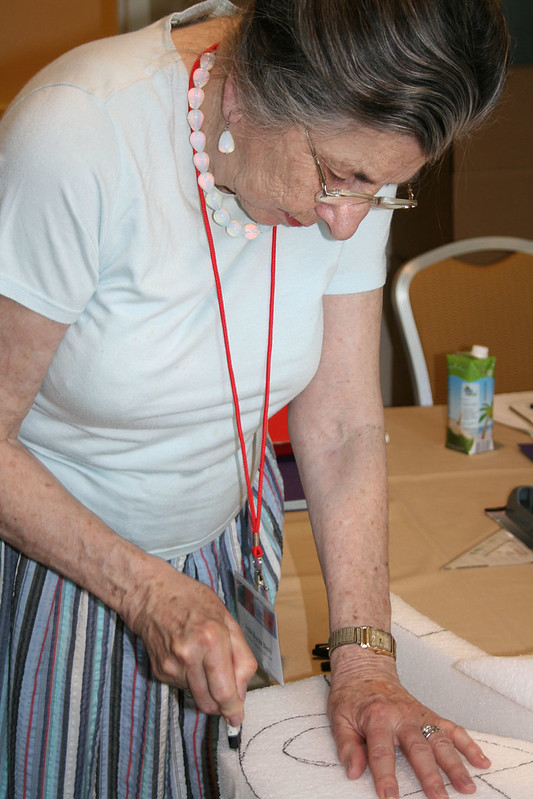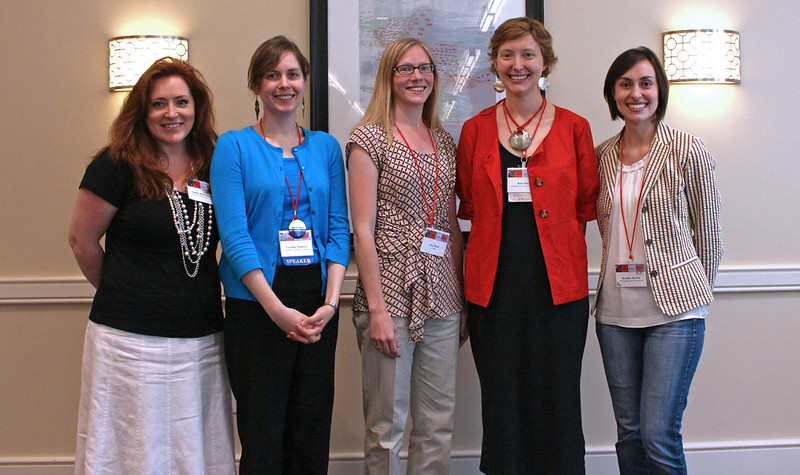Pre-conference workshop led by William P. Lull
31 May 2011
Notes by participant Priscilla Anderson
In a solid day of information-packed lectures, Bill Lull explained the basic elements of the systems that control air temperature, humidity, and quality in typical collections storage buildings, and then talked about many ways that we can decrease energy use by those systems. He framed the day by asking the following questions: What is the system? How does it work? What can we do to make it work more efficiently?
Key takeaways
Systems are usually overbuilt so they have the capacity to accommodate the peak demand (the hottest, coldest, driest, and most humid days of the year). However, they use a lot of energy at the peak. But they are much more efficient when running at partial power. So if you have variable speed fans, you can turn them down on days that don’t have extreme heat or cold coming in from the outside. They will use less energy than a smaller sized fan running at top speed. Bill gave the analogy of a Prius going at top speed versus a BMW just keeping up with the Prius…the BMW has much better gas mileage at the Prius’ top speed! Optimize your overbuilt systems, tweaking them to accommodate different weather patterns
Bill made a plug for the work that IPI has done (providing PEMs and software that’s easy to use so we have data to use when talking with Operations), and for promoting the idea that we can improve energy efficiency by using existing equipment, maybe doing some component upgrades, tweaking setpoints, make the existing system work better.
Optimizing existing systems to improve energy efficiency
Cooling systems: Some cars have a gauge in the car that tell you the real-time miles per gallon so you can see the impact of how you drive. Most HVAC systems don’t have energy meters installed on individual equipment, so it’s hard to know how to optimize the system. Siemens will install one of these meters for approx. $16,000 for two chillers. Having feedback about the energy use at the device helps you make intelligent choices about how you operate that device.
Other things you can do with your chiller:
If you don’t have a dehumidifier, but you have high humidity, then use your chiller to cool the air to the dew point in order to condense liquid water out of the air. 52 degrees F is cool enough to get air that will then be 50% RH at 70 degrees F. So you can use your chiller as a dehumidifier. Then you have to heat the air back up to the desired temperature again, so that takes some energy. But since cooling systems have heat as a byproduct, you could conceivably recover that “low-grade heat” and reuse it.
Fans: Install variable frequency drives on fans so you can operate them at reduced capacity. Fans operated at 50% speed only use 15% of the energy. There is a double bonus for slowing down your fans that is predicted by a mathematical equation I won’t reproduce here. Basically, when you have less air flow, that gets multiplied by a pressure number that is non-linearly lower…you get the pressure drops further along in the system (filters, etc) that then results in much less energy use.
Pumps: If you reduce the gallons per minute, you can get a similar double effect for energy savings as the fan system.
Air quality: we don’t need as much fresh air (oxygen) as we think. In fact, we can re-breathe our own air as long as we get rid of the carbon dioxide that we offgas. Dilution with outside air is the least efficient method of getting rid of CO2. So if you can filter out CO2, then you can have a lot more re-use of air rather than bringing in outside air that then needs to be conditioned.
Lighting is a significant source of heat in a building, so in the summer you have extra load that you have to cool building because of lighting. You’re using energy to turn the light on, and then more energy to cool off the air that was heated up by the light. So turn off the lights in the cooling season!
Things not to do:
Night-time shut downs you are shutting it down at the time when it would be operating more efficiently anyway (not as much cooling needed at night), and then you need to do more to catch up during the peak load time (hot day).
Cyclic control: on/off/on/off uses 50% of the energy. Variable frequency drive only uses 35% of the energy to meet the same load.
Filters: Do not get rid of filters! But you can use extended surface area filters. Slow down the fan instead to save energy.
New construction/building design considerations:
You don’t want operable windows in an all-air system…too much imbalance on the system, and the air that comes in doesn’t get mixed well in the spaces. Opaque, insulated walls have the smallest loads (i.e. they leak less than fixed windows, and much less than openable windows and doors). Daylighting (windows, skylights) does not save energy…what you save in lighting, you pay more for in load (cooling in the summer).
Don’t use pressure sensors/pressurized systems…there are better ways to manage outside air. In practice, they just don’t work.
It’s important to advocate for separate air handler for storage and office spaces, since the air quality/filtration (as well as temperature/humidity) needs are so different.
Dehumidification: Pre-treat outside air with its own cooling coil to get some moisture out, so you don’ t need a reheat.
Utilities
Vocabulary check: “geothermal” means dig a hole and steam comes out (volcanic activity nearby…Iceland, Hawaii). For the kind of digging we do in North America, it’s called Ground Source Heat Pump, where you send air/water down a deep hole to condition it to a constant temperature (approx. 50 degrees F).
Photovoltaic (solar power) is very cost-effective. Many telephone poles have a photovoltaic array panels. They don’t need much maintenance (unlike generators); that’s why solar power is a sustainable source of energy. Solar panels can be for either hot water or electricity.
Hydrogen powered cars are the future…split water into O2 and hydrogen, then release the O2 and store the hydrogen for power.
Hydro power is also a good sustainable source, because can ramp it down and up very quickly…anything with steam doesn’t have that flexibility. You can pump water up into a tower, and generate electricity by letting it run down whenever you want it.
Utility companies charge large institutions “Demand Costs” that are calculated by the peak amount used in a 15 or 30 minute period, then you’re billed for that for the rest of the year. So if you can reduce that peak amount by even just a little bit, then your costs will be lower over the whole year regardless of how much energy you use at other times.










